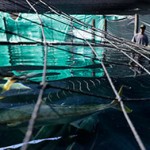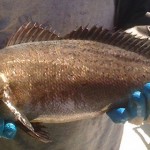THE ST. AUGUSTINE RECORD
By KEVIN WADLOW
Florida Keys Keynoter
Offshore fish farms could soon be raising native species in Gulf of Mexico waters.
Beginning in early February, commercial marine farmers can begin seeking permits from the National Marine Fisheries Service, an agency of the National Oceanic and Atmospheric Administration.
A rule issued Jan. 11 authorizes NOAA Fisheries to issue up to 20 Gulf aquaculture permits for waters at least nine miles from Florida’s gulf shoreline. That apparently includes waters north of the Florida Keys.
No fish farms will be permitted in Gulf waters protected by the Florida Keys National Marine Sanctuary or Everglades National Park.
The aquaculture proposal was endorsed by the federal Gulf of Mexico Fishery Management Council. NOAA staff has worked on the plan for more than five years.
“Examples of allowable species include red drum, cobia, jacks, snappers and groupers,” says an aquaculture summary.
“As demand for seafood continues to rise, aquaculture presents a tremendous opportunity not only to meet this demand, but also to increase opportunities for the seafood industry and job creation,” NOAA Administrator Kathryn Sullivan said in a statement.
Currently there are no other commercial finfish or shellfish operations operating in federal waters.
“Expanding U.S. aquaculture in federal waters complements wild harvest fisheries and supports our efforts to maintain sustainable fisheries and resilient oceans,” Sullivan said.
Hawaii has “open-ocean aquaculture technologies, including submersible cages” in its state waters.
Species raised in Gulf of Mexico farms must be native species in case of escape or intermingling with wild populations.
Concerns raised previously about offshore aquaculture have focused on possible pollution and spread of fish diseases to wild populations. The NOAA report says those situations will be continuously monitored, and operations must avoid sites considered as essential habitat.
Previous attempts to raise snapper commercially in enclosed water bodies in the Keys have not proven financially feasible.
According to federal estimates, Gulf fish farms have the potential to raise nearly 13 million pounds of food fish annually.


